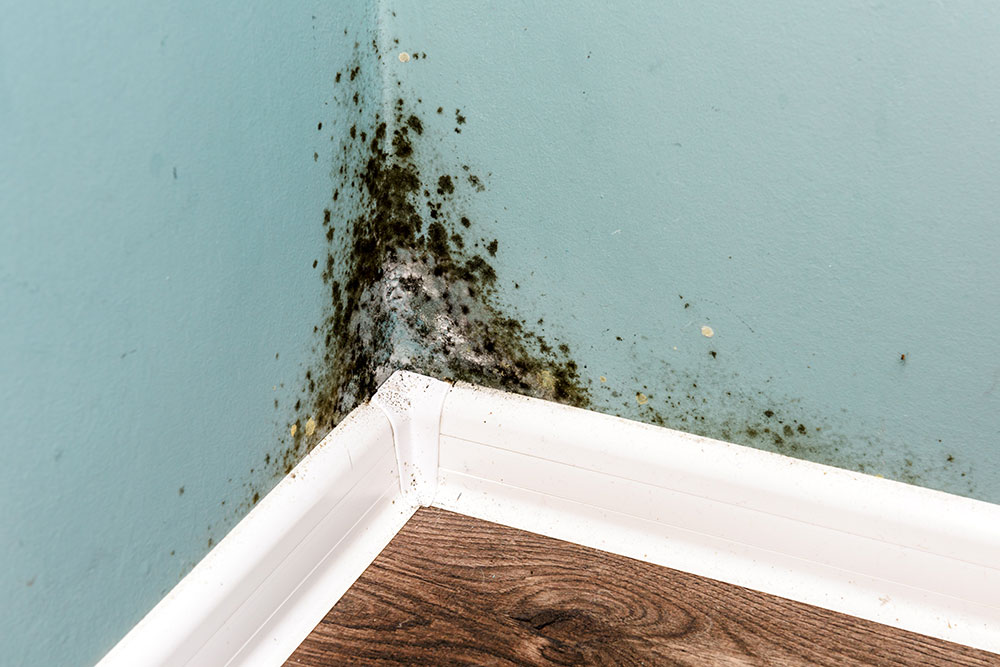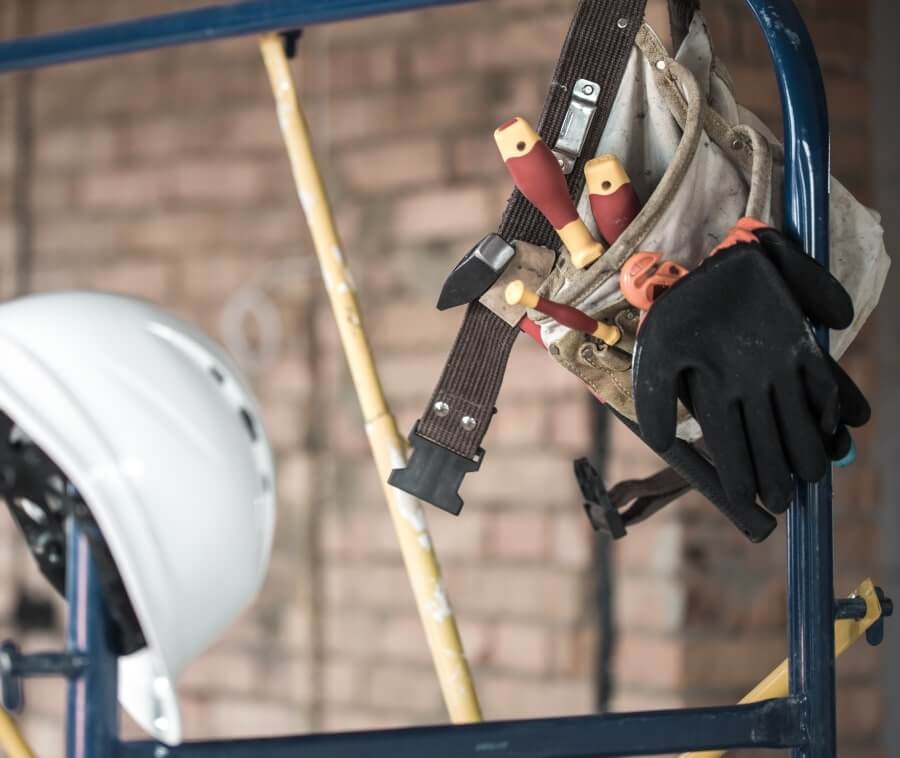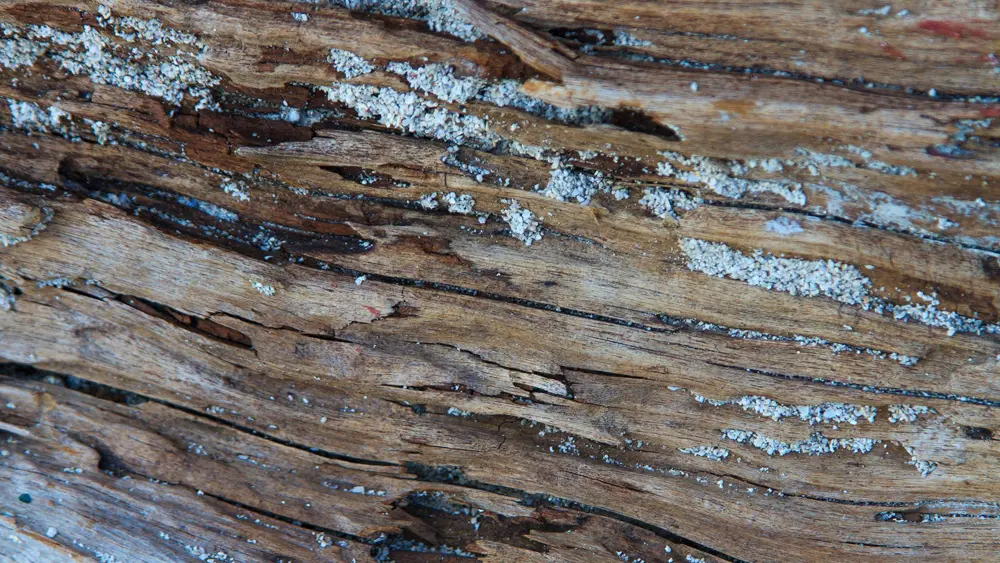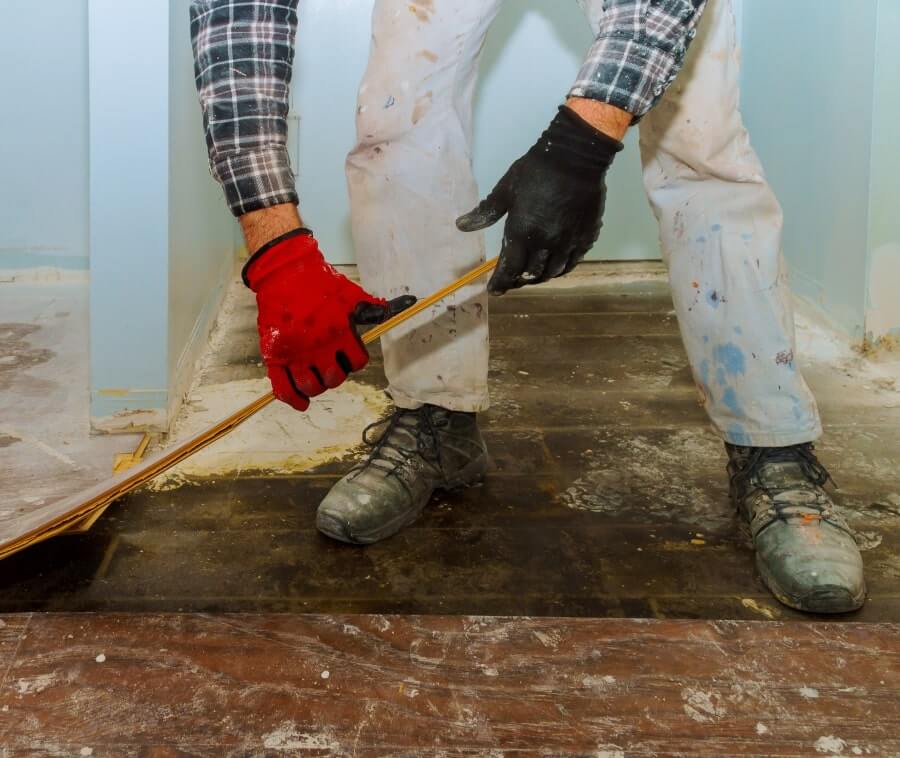Mold might seem like a minor annoyance, but it can quickly escalate into a serious problem for your home and health. From musty odors to hidden moisture, mold thrives in spaces we often overlook. Left unchecked, it can damage your property and trigger allergies or respiratory issues. The good news? Spotting mold early can save you time, money, and unnecessary stress. In this post, we’ll cover the telltale signs to watch for and how catching them early can protect both your home and your peace of mind.
What is Mold?
Mold is a type of fungus that grows in damp or wet environments. Unlike plants, mold doesn’t rely on sunlight to survive but instead thrives by breaking down and feeding on organic matter. While it’s a natural part of the outdoor ecosystem, helping decompose leaves and organic debris, its presence indoors is far from desirable. Not only can mold damage your property, but it can also lead to health problems, like allergies, respiratory issues, and even more severe complications for those with weakened immune systems.
If you’ve ever noticed dark greenish-black patches on your bathroom ceiling or a musty smell in the basement, you’ve likely encountered mold. But what types of mold are most common in homes, and how does it grow? Let’s break this down into key points below.
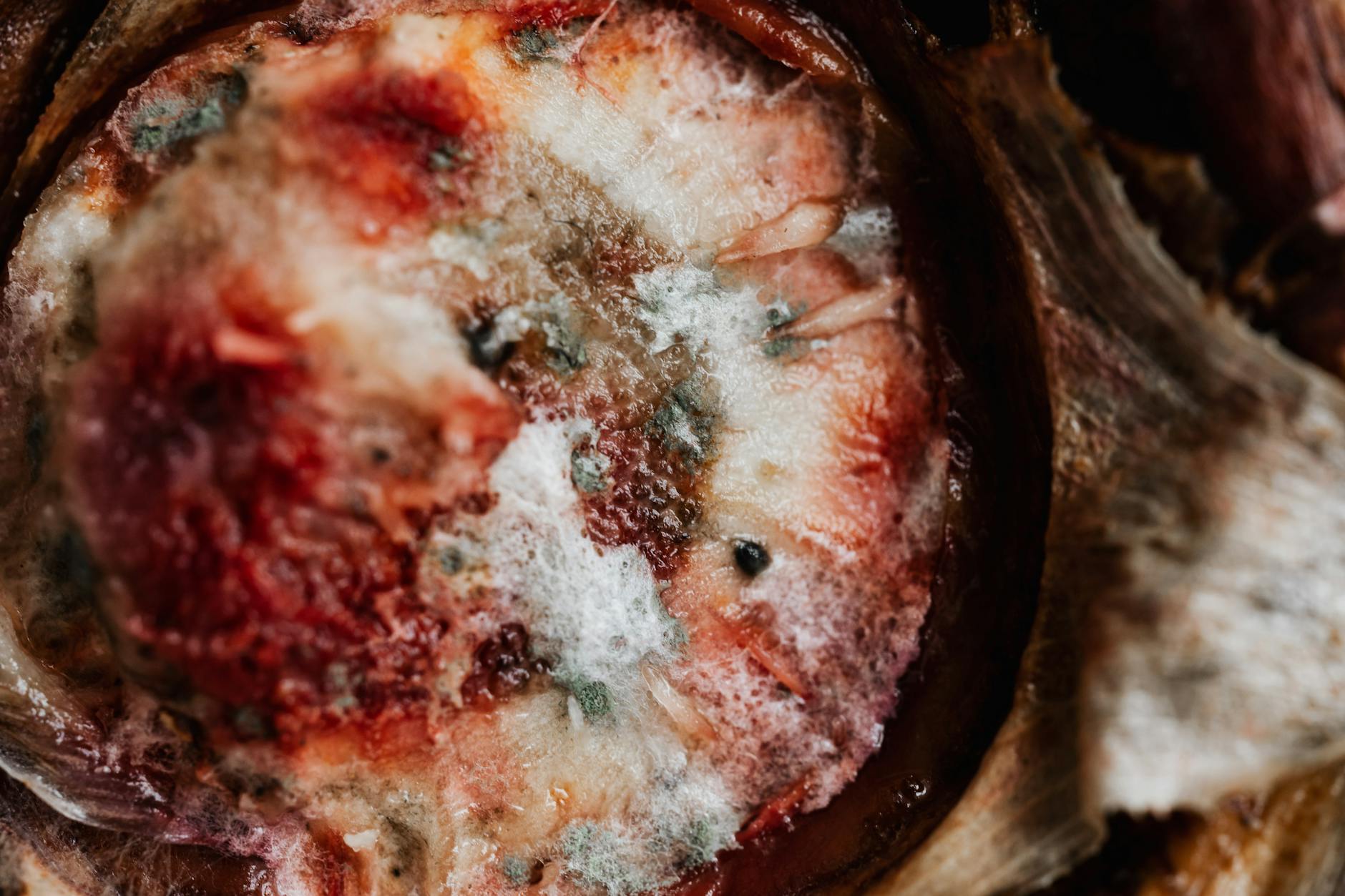
Common Types of Household Mold
Not all mold is created equal. Here are some of the most common types you might find in your home:
- Cladosporium: This mold can appear as olive-green or brown spots and often thrives in areas with poor ventilation, such as window frames or inside HVAC systems. It can grow on both wood and fabrics. It’s particularly important to clean Cladosporium properly because, although it’s less toxic, it can still irritate those with allergies.
- Penicillium: Known for its blue-green appearance, this mold spreads quickly and loves damp spaces like carpets, wallpaper, and insulation. Penicillium is associated with allergic reactions and can produce a very musty odor in affected spaces.
- Aspergillus: Commonly found in dust and air, Aspergillus can appear in a variety of colors, such as yellow, green, or even gray. While some strains are harmless, others can produce toxins that have serious health risks, especially for individuals with compromised immune systems.
- Stachybotrys chartarum (Black Mold): Infamous and often feared, this mold is typically black or dark green and thrives in areas that remain wet for long periods, such as water-damaged walls or ceilings. Black mold is particularly toxic, producing mycotoxins that can cause respiratory distress, chronic fatigue, and other health issues.
Each type of mold has unique characteristics, but one thing they all have in common is their ability to thrive in areas with high moisture and minimal airflow.
How Mold Grows
Mold spores are invisible to the naked eye and present everywhere in the air. But, they only multiply and form colonies when conditions are just right. Here’s what mold needs to thrive:
- Moisture: Mold growth is impossible without water. Leaks in roofing, plumbing, or windows often provide the moisture mold needs. High humidity levels (above 60%) can also contribute significantly to mold growth indoors.
- Organic Material: Mold feeds on organic matter like wood, drywall, paper, or even fabrics. If you think about it, this means almost every surface in your home could act as a buffet table for mold.
- Optimal Temperature: While temperature preferences vary by type, most mold species thrive in environments ranging from 60°F to 80°F. Unfortunately, these are the same temperatures most humans find comfortable.
- Poor Ventilation: Stale, moist air provides the perfect environment for mold spores to settle and grow. Bathrooms, basements, and even poorly ventilated kitchens often become breeding grounds.
Given its minimal requirements, mold doesn’t need much to get started—just a little dampness and time. If you leave mold unchecked, it won’t take long before it spreads, causing unsightly stains and releasing spores into the air.
By controlling moisture, you can disrupt this cycle and make your home less hospitable for mold. Stay tuned for the next section, where we’ll explore how to spot those early warning signs before mold takes over.
Why Identifying Mold Early is Crucial
Mold is a silent invader that can wreak havoc on both your health and home before you even know it’s there. Addressing mold early is about more than just appearances—it’s a proactive measure to protect your well-being and safeguard your property. From health concerns to long-term damage to your home, understanding the reasons to detect mold early can save you headaches and significant costs down the road.
Impact on Health
Mold exposure doesn’t just make your home smell bad—it can seriously affect your health. Mold releases spores and allergens into the air, which can lead to various health problems, particularly for those with pre-existing conditions or allergies.
Here’s how mold exposure might affect your health:
- Allergy Symptoms: Stuffy nose, sneezing, and itchy or irritated skin are common in individuals with mold sensitivity. These symptoms can escalate quickly if mold isn’t addressed.
- Respiratory Issues: Breathing in mold spores can cause wheezing, coughing, and even shortness of breath. For people with asthma, mold can exacerbate symptoms and lead to asthma attacks.
- Chronic Illness: Prolonged exposure, especially to toxic molds like Stachybotrys chartarum (black mold), may lead to more severe health complications such as hypersensitivity pneumonitis or long-term immune issues.
- Increased Vulnerability: Those with compromised immune systems, infants, or the elderly are at higher risk of infections caused by mold exposure.
- Neurological Effects: Some studies suggest potential links between toxic mold and headaches, chronic fatigue, and even memory issues.
The health impacts of mold are a critical reason to act quickly. By identifying mold early, you’ll reduce ongoing exposure to mold spores and eliminate potential long-term health risks.
Impact on Property
Mold isn’t just a health concern—it’s also destructive to your home. Growing in damp and poorly ventilated areas, mold feeds on organic materials like drywall, wood, and even carpeting. If it’s left unchecked, the damage can become irreversible, driving up repair and replacement costs.
Here’s how mold compromises your property:
- Weakened Structural Integrity: Mold eats away at walls, ceilings, and even support beams, which can compromise the strength and safety of your home.
- Furniture and Personal Belongings: Items like upholstered furniture, rugs, and clothing are especially vulnerable to mold. Often, they’re impossible to salvage once mold spreads.
- HVAC System Contamination: Mold can invade your home’s ventilation system, spreading spores throughout and making it harder to control the problem. Cleaning and repair costs for HVAC systems can be expensive.
- Lower Property Value: If mold issues become visible or widely known, it can significantly reduce your home’s market value—buyers are wary of damages that signal ongoing maintenance concerns.
Addressing mold involves more than just removing the visible patches; it requires tackling the root cause, whether it’s a hidden water leak or poor ventilation. The earlier you catch mold, the easier it is to prevent extensive damage, save money on repairs, and maintain your home’s structural integrity.
By staying vigilant and identifying mold as soon as it appears, you protect not only your health but also your biggest investment—your home.
Common Early Signs of Mold
Mold often hides in places you least expect, quietly spreading and causing damage before you even notice it’s there. Recognizing the early signs of mold can help you address issues before they become costly and hazardous. Let’s break down the telltale signs to keep on your radar.
Musty Odors
One of the first red flags of mold is a persistent musty smell that some describe as damp or earthy. These odors are often an indication of mold spores growing in hidden spaces, like behind walls, under floors, or inside HVAC systems. If you’ve recently noticed an unexplained smell that lingers despite cleaning, it could be a sign of mold quietly taking hold. Basements, crawlspaces, and other areas with high humidity are notorious for harboring such odors.
Visible Discoloration and Spots
Mold can appear in various forms, but it’s commonly identified by dark spots, fuzzy patches, or slimy growths. Colors vary widely, from green and black to yellow and even white. Pay attention to areas like bathroom grout, window frames, or even upholstery. What looks like harmless dirt could actually be early mold development that will worsen without intervention.

Allergy and Respiratory Symptoms
Does someone in your household sneeze or cough more often when indoors? Mold is notorious for stirring up allergies and respiratory problems. Common symptoms linked to mold exposure include:
- Sneezing or a runny nose
- Coughing or wheezing
- Itchy or watery eyes
- Shortness of breath for asthma sufferers
These symptoms often persist and may worsen over time, especially in rooms where mold is present. If you’ve noticed unexplained health reactions, consider inspecting your home for mold.
Water Damage and Leaks
Have you experienced plumbing issues or roof leaks recently? Mold thrives in moist environments, so any area affected by water damage is at high risk. Look for staining, bubbling paint, or damp areas on walls, ceilings, or floors. Even small, slow leaks under sinks or behind appliances can create a perfect environment for mold if not addressed quickly.
Warped or Bubbling Paint and Wallpaper
Sometimes, the walls can reveal mold issues without you even seeing the spores. Warped, peeling, or bubbling paint and wallpaper often signal moisture buildup, which is mold’s best friend. These visual cues shouldn’t be overlooked, especially if they’re occurring in kitchens, bathrooms, or any room where water is frequently used. Mold may already be growing behind these surfaces, out of sight.
By keeping an eye out for these early signs, you can tackle potential mold problems early and protect your home and health.
Where to Look for Mold in Your Home
Mold can creep into the most unsuspecting corners of your home, thriving in areas with excess moisture, poor airflow, and organic material to feed on. Knowing where to look is half the battle when it comes to identifying and tackling mold early. Let’s explore the key spots in your home where mold is most likely to make itself comfortable.
Bathrooms and Kitchens
Bathrooms and kitchens are mold magnets because they often combine heat, humidity, and water – the trifecta for mold growth. Pay close attention to these areas:
- Under Sinks: Check underneath plumbing for leaks or trapped moisture that may be fostering mold.
- Around Tubs and Showers: Mold loves to grow in the grout between tiles or along caulking where water tends to sit.
- Near Dishwashers and Refrigerators: These appliances can develop hidden leaks or condensation, creating a mold-friendly environment.
A regular visual check and promptly fixing leaks can help prevent mold from taking hold in these high-risk spots.

Basements and Crawl Spaces
Dark, damp, and tucked out of sight, basements and crawl spaces are perfect breeding grounds for mold. These areas are particularly vulnerable due to poor ventilation and general dampness from:
- Leaky Foundations: Cracks or gaps in walls and floors can allow water to seep in, feeding mold.
- Condensation on Pipes: Uninsulated pipes in basements often sweat, leaving moisture behind.
- High Humidity Levels: Without proper dehumidification, excess moisture can accumulate in the air.
Investing in a dehumidifier or improving drainage can go a long way in keeping these areas dry and less attractive to mold.
HVAC Systems
Your air conditioning and heating systems could be silently spreading mold throughout your home. Mold commonly develops in ducts, filters, or even on coils due to accumulated moisture from condensation. This not only impacts your HVAC system’s efficiency but also reduces indoor air quality.
Pro tips for preventing HVAC mold:
- Regularly clean or replace air filters.
- Schedule professional HVAC maintenance annually.
- Keep ducts dry by running a dehumidifier if humidity levels are high.
If you detect a musty smell when the system is running, mold might already be an issue.
Attic Spaces
Attics can quietly become mold hotspots due to their exposure to roof leaks and fluctuating temperatures. Poor insulation or ventilation only makes the problem worse. Keep an eye out for:
- Water Stains on Wooden Beams: These can indicate roof damage allowing water in.
- Visible Mold Growth on Insulation: Damp insulation can trap moisture and may need replacement.
- Inadequate Ventilation: Without proper airflow, humid air gets trapped, making mold growth more likely.
Regular roof inspections and ensuring proper attic ventilation can mitigate mold risks.
Household Items and Furniture
Mold doesn’t always stick to walls and ceilings; it can also hide in plain sight on your belongings. Here’s where to look:
- Carpets: Spill something? If it wasn’t dried quickly, mold could be growing underneath.
- Curtains: Fabric exposed to humidity can develop mold spots over time.
- Upholstered Furniture: Mold can embed itself in cushions or under fabric, especially in damp rooms like basements.
Inspect these items regularly, especially in rooms with known moisture issues. Always dry spills immediately and consider professional cleaning for carpets or furniture showing signs of mold.
By systematically checking these common areas, you can stay ahead of potential mold issues. Mold thrives on being unnoticed, so vigilance is key to protecting your home and health.
Steps to Take if You Find Mold
Discovering mold in your home can be alarming, but it’s important to act quickly and appropriately to ensure your safety and prevent further growth or damage. Here’s a practical guide to help you handle the situation effectively.
Safety Precautions
The first priority when dealing with mold is protecting yourself and anyone else in the area. Mold spores can easily become airborne, posing health risks when inhaled or when they come into contact with your skin. Follow these essential safety practices:
- Wear Personal Protective Equipment (PPE): Use a high-quality N95 mask or respirator to avoid inhaling harmful spores. Gloves made of non-porous materials like nitrile, rubber, or vinyl will protect your hands, and goggles (not vented) safeguard your eyes. Avoid skin contact with the mold.
- Isolate the Area: Seal off the mold-affected area using plastic sheeting or similar barriers. This helps prevent spores from spreading to other parts of your home while you clean.
- Ensure Proper Ventilation: Work in a well-ventilated space by opening windows and turning on fans to reduce spore concentration in the air.
- Avoid Mixing Cleaners: Never combine bleach with ammonia or other chemicals as it produces toxic fumes. Stick to safe cleaning practices.
By prioritizing protective measures, you reduce the risk of exposure to mold spores, keeping everyone in your household safer.
When to Call Professionals
Not all mold problems are appropriate for a DIY approach. In certain situations, bringing in certified mold remediation experts is the safest and most effective solution.
Call a professional if:
- The infested area exceeds 10 square feet. Large infestations often require specialized tools, techniques, and containment measures.
- Mold is growing on porous materials like drywall, insulation, or wood, which may need to be removed and replaced.
- You notice a recurring mold problem, which may indicate underlying issues like hidden water leaks or structural damage.
- There’s visible mold in or around your HVAC system. Mold in air ducts can easily spread spores throughout your home and requires professional cleaning.
- Household members experience unexplained health issues, such as worsening asthma or frequent allergy symptoms, linked to mold exposure.
Professionals have the equipment and expertise to remove mold safely and address the root cause, ensuring it doesn’t return.
DIY Mold Removal Tips
For smaller mold infestations, such as patches less than 10 square feet, you may be able to address the issue yourself with the right approach. Follow these steps for safe and effective mold cleanup:
- Gather Supplies: You’ll need household detergent, a scrub brush, disposable rags, a bucket, water, and a disinfectant like white vinegar or diluted bleach (1 cup per gallon of water).
- Prep the Area: Isolate the space with barriers or plastic sheeting, and ensure proper ventilation by opening windows.
- Scrub the Surface: Scrub hard surfaces, like tile or concrete, with a cleaning solution and a stiff-bristled brush. Rinse thoroughly and dry the area completely.
- Dispose of Contaminated Materials: For porous items like ceiling tiles, carpet, or drywall that cannot be fully cleaned, remove and discard them properly. Seal items in heavy-duty plastic bags to avoid spreading spores.
- Dry Everything Thoroughly: Mold thrives in moisture, so eliminate the source. Use fans and dehumidifiers to ensure all surfaces are completely dry.
- Monitor for Recurrence: Keep an eye on the cleaned area for signs of new mold growth. If mold reappears, it may indicate a deeper issue requiring professional assistance.
By using everyday products and staying vigilant, you can safely manage minor mold issues yourself. However, ensure you address moisture problems—like leaks or high humidity—that could allow mold to grow again.
Preventing Mold in Your Home
Preventing mold from taking hold in your home starts with controlling its main catalyst—moisture. Even the smallest damp spots or unchecked humidity can create a perfect breeding ground for mold. To minimize the risk, there are several key steps you can take to ensure your living spaces remain dry and mold-free.
Control Humidity Levels
Managing your home’s humidity is one of the most effective ways to prevent mold growth. Mold thrives in high-humidity environments, so keeping indoor levels below 50% is essential. Not sure how to monitor this? Invest in a hygrometer, a small device that measures humidity levels indoors.
Here’s how to keep humidity under control:
- Use dehumidifiers, especially in damp areas like basements or laundry rooms.
- Run air conditioners during warmer months to lower humidity and circulate air.
- Keep windows cracked open or use exhaust fans during activities that create steam, like showering or cooking.
- Limit indoor plant watering, as overwatering plants can add unnecessary moisture to the air.
Reducing humidity doesn’t just protect your home—it also keeps the air fresher and healthier for your family.
Fix Leaks Promptly
A tiny leak might not seem like a big deal, but it can lead to serious mold problems if left unaddressed. Whether it’s a drip under your sink, a loose roof shingle, or a cracked window seal, water intrusion creates the perfect environment for mold to grow.
Take care of leaks as soon as they’re spotted. Key areas to check include:
- Plumbing: Inspect under sinks, around washing machines, and near water heaters for hidden leaks.
- Roofing: Look for missing shingles or areas where water pools after a rainstorm.
- Windows and Doors: Ensure seals and caulking are intact to prevent water seepage.
By catching these issues early, you prevent costly repairs and stop mold before it starts.
Ensure Proper Ventilation
Good airflow is essential for keeping spaces dry and preventing trapped moisture. Poorly ventilated areas, like bathrooms, kitchens, and attics, are particularly susceptible to excess humidity and mold development.
Make sure your home stays properly ventilated with the following tips:
- Install and use exhaust fans in moisture-heavy areas like bathrooms, kitchens, and laundry rooms.
- Open windows when possible, particularly after steamy activities like cooking or showering.
- Keep furniture and curtains a few inches from walls to let air circulate freely around your home.
- For homes with attics, ensure vents aren’t blocked and add a fan, if needed, to maintain optimal airflow.
Proper ventilation is a simple but effective way to deeply reduce the likelihood of mold in often-neglected areas.
Regular Home Monitoring
Even with preventive measures, consistent monitoring is key to catching potential mold issues early. Routine home inspections can help you identify risks before they escalate.
Here’s a checklist for routine mold monitoring:
- Check bathrooms for damp floor mats, moldy grout, or peeling caulking around tubs and showers.
- Inspect basements and crawlspaces for any signs of water accumulation or high humidity.
- Look at ceilings and walls for discoloration, bubbling paint, or persistent dampness.
- Evaluate appliances like refrigerators, dishwashers, and washing machines for leaks or pooling water.
Document your inspections and address any minor issues you discover immediately. Early intervention saves time, money, and protects your health.
Being proactive about your home’s moisture levels and addressing problem areas promptly can make all the difference in keeping your home mold-free.
Conclusion
Keeping an eye out for warning signs of mold is essential for maintaining a safe, healthy, and comfortable home. Early detection can save you from costly repairs and reduce health risks, making it worth the effort to stay vigilant.
Musty odors, visible discoloration, and unexplained allergy symptoms are all red flags that shouldn’t be ignored. Regular home inspections and proper ventilation go a long way in preventing mold from taking hold.
Don’t wait for mold to become a bigger problem—act now. Whether it’s fixing leaks, managing humidity, or consulting a professional for serious infestations, your proactive steps today will protect both your home and your well-being.
Have you spotted any signs of mold in your home recently? Share your experience or tips below to help others stay informed.

